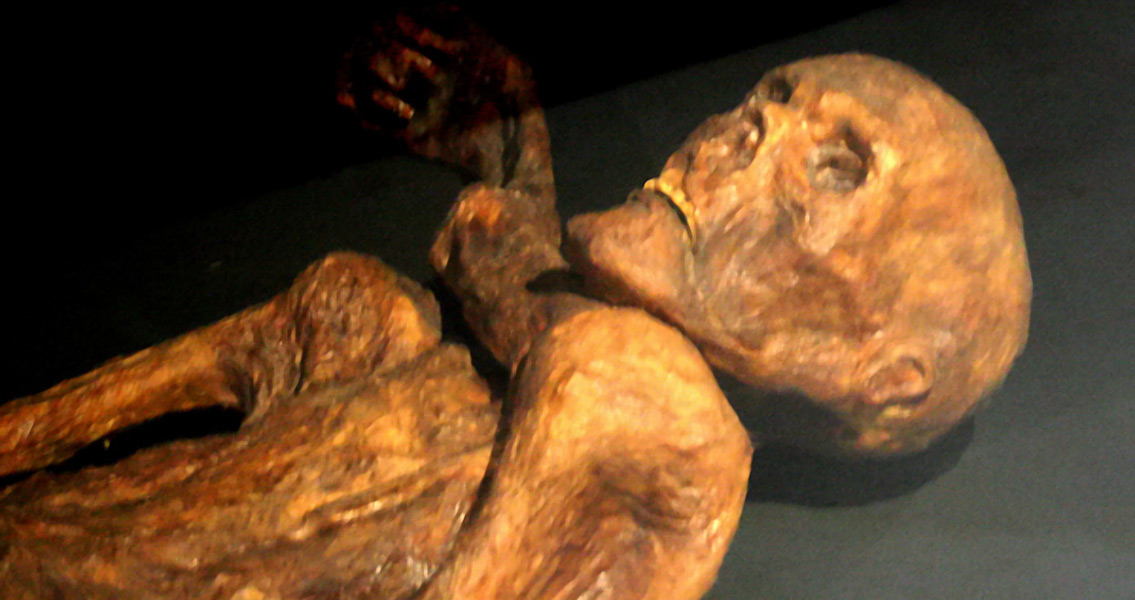<![CDATA[New research has revealed previously unknown tattoos on a man who had been preserved in ice for over 5,000 years. By using advanced imaging techniques to analyse the ancient man, named Ötzi, the new tattoos were discovered on his chest. Ötzi was originally discovered in 1991 by hikers in the Ötztal Alps, on the border of Austria and Italy. His naturally mummified corpse meant that he had been remarkably well preserved. Ötzi's body was in such a good condition that researchers learnt a huge amount about his life and his final hours, and he soon became an archaeological superstar. It was clear from the outset that Ötzi had been killed by attackers around 3,500 BCE. His body and belongings were then left in a gully where they became encased beneath an alpine glacier. Glacial meltwater combined with the extreme cold of the mountain range created the conditions for his body to become naturally mummified. Since Ötzi was initially discovered, a huge amount of information has been gleaned from his remains. It is arguable that more is known about Ötzi's final days than about those of any other ancient person. He was aged around 45 years old when he was killed by being shot in the back with a stone-tipped arrow and then bludgeoned. It has also been discovered that Ötzi suffered from a variety of ailments. He had advanced gum disease, gallbladder stones, lyme disease, whipworms in his colon, and atherosclerosis (a thickening of arterial walls). By sequencing his entire genome, researchers also found he had a genetic predisposition to heart disease. Clearly, Ötzi had lived a hard life. The recent study focused on a particularly interesting aspect of Ötzi's body; his tattoos. The ink decorations on his body are the earliest known examples of tattoos in all of Europe, showing that tattooing was practiced as early as the Chalcolithic period. It was clear for some time that Ötzi was adorned with numerous tattoos, but it had been difficult to determine precisely how many. As a result of being exposed to sub-zero temperatures for centuries, Ötzi's epidermis layer of skin had darkened. The contrast between Ötzi's skin and the ink used in his tattoos had become so faint that it was impossible to see some of them with the naked eye. By using the near-infrared spectral region of light, a team led by Marco Samadelli has now revealed previously invisible tattoos on Ötzi's skin. The new technique can examine things invisible to the naked eye, as the carbon in ancient tattoo ink absorbs certain wavelengths of light differently to human skin. In order to fully examine Ötzi's tattoos, the team slightly thawed his body, normally kept at 21.2˚F, in order to remove the layer of ice. Once the ice had thawed, Ötzi was photographed from all sides with filters which captured different wavelengths of light. The team created the first complete catalogue of Ötzi's tattoos; he had 61 in total. It is thought that Ötzi's tattoos were primarily medicinal or therapeutic in nature. Previous research revealed that 80% of his tattoos corresponded to classic Chinese acupuncture points used to treat rheumatism. The research of Samadelli and his team has revealed never-before-seen details about Ötzi's tattoos. It is hoped that their novel technique of examining skin could reveal previously unknown information about other ancient individuals. For more information on this story: http://www.sciencedirect.com/science/article/pii/S1296207415000023 Image courtesy of Wikimedia commons user: 120]]>
Ancient Iceman's Tattoos Mapped
